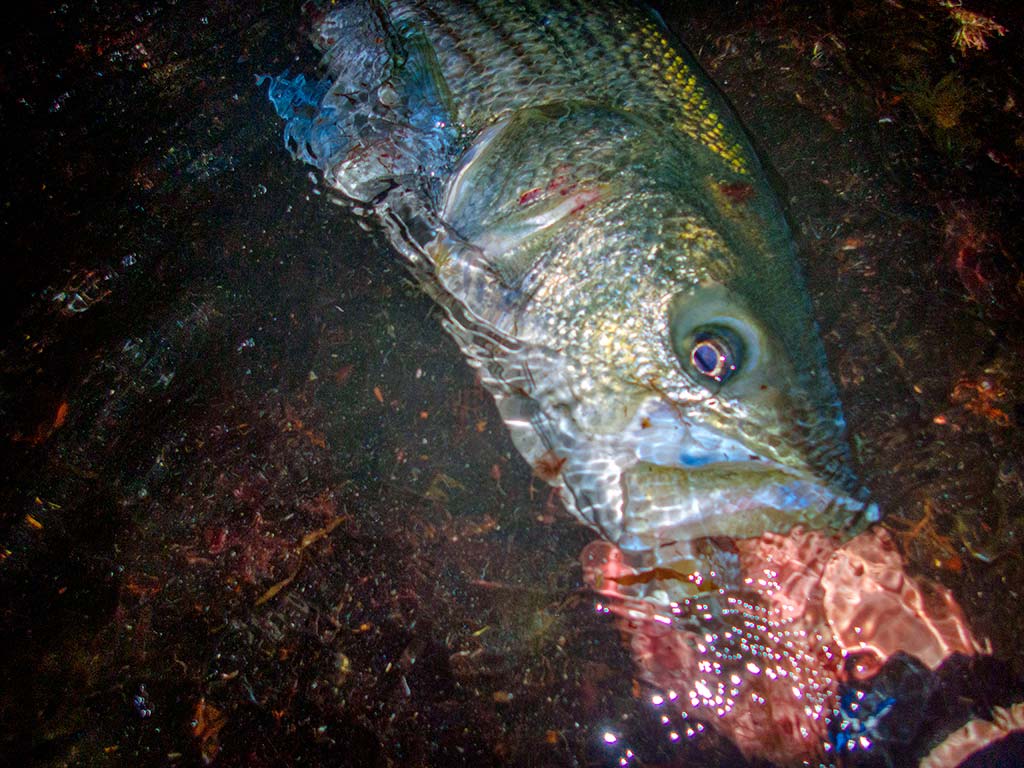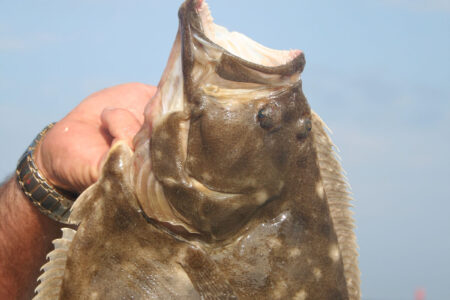Getting frantic can sometimes fire up a good bite.
The height of summer is upon us, and in the surf, it can be both boom and bust. With water temperatures rising to their high points, fishing pressure up, and the calmest days of the year upon us, stripers can get fussy and refuse even the most reliable plugs, in the most reliable places. This is the time of year when we must pay the most attention to details and nuance, and work hard to deliver our plugs and flies precisely the way that stripers want them.
One of the important aspects of plug presentation often neglected is how “active” you make your retrieve. Typically, we are taught early on to go very slow with our plugs and retrieve them at a consistent pace near the bottom. This works at least 75% of the time, and so many of us continue to default to this “slow and low” technique and stick to it forever. Yet, many advanced anglers I know will greatly vary their retrieve, regardless of the plug, time of year, or if they’re catching or not. Varying retrieve, from slow to fast, steady to irregular, stops and starts, is one of the easiest change-ups you can make to test striper feeding “mood”. Even if you’re catching fish every cast, I encourage you to try changing it up. You very well could go from schoolies to something much larger, and there is very little cost involved. If it doesn’t work, you simply go back to what you were doing a cast or two later.

One way I have found to deal with finicky or wary fish is by interjecting my straight retrieves with rapid, repeated jerking, bouncing of the rod tip, and hard, fast sweeps. I call this my “panic” technique. It works with all plugs, though I find it works better with some plugs than others. Soft plastics, glide baits, plastic swimmers, atom juniors, and needles all excel with the “panic” technique. Essentially I will retrieve my plug normally, and at some intervals work my tip almost how I would with a pencil popper or Polaris popper. Start whipping the tip of the rod, jerking hard repeatedly. Plugs that are near the surface may actually jump out of the water, and make loud splashes. Those that are subsurface, will jerk, dart, and even roll over. I believe this sudden spasm of action induces strikes from fish that are following the plug, but are only a little interested but far from committed to a strike. Fish do not think, but they react because they instinctually sense the bait may be aware of their presence and about to escape.
It may seem counterintuitive, but I find this kind of frantic, random action is most effective in August and into September. Given many stripers have become at least a bit more lethargic and many waters are calm and quiet, you may be inclined to go even more subtle with your delivery. And I concede that this is often correct. However, if you’re confident in your spot, your plugs, and your pattern, and going slow isn’t working, I strongly encourage you to throw in some periods of retrieve where you aggressively thrash the rod and get the plug jerking and splashing maniacally. Using this method, I have pulled fish seemingly from dead water and suddenly found myself getting hits and landing fish every few casts.
Note, I am not suggesting you go fast with your retrieve; I continue to reel at a slow to moderate pace. There is a tendency to want to go fast while you are throwing all this “craziness” into your retrieve, but I find this to be counterproductive. Going fast only seems to turn the fish off. While it certainly doesn’t hurt to try it a few times, I believe the best method with the panic retrieve is to go slow and steady, and interject just a few seconds of panic once or twice. Use it like seasoning, not the main ingredient: don’t overdo it either. I find that if I go crazy the whole retrieve or large proportions of it, it is less effective. It’s natural for the bait to react spastically intermittently, but going crazy for 70 yards is about as rare behavior as you’ll get in the aquatic world.




